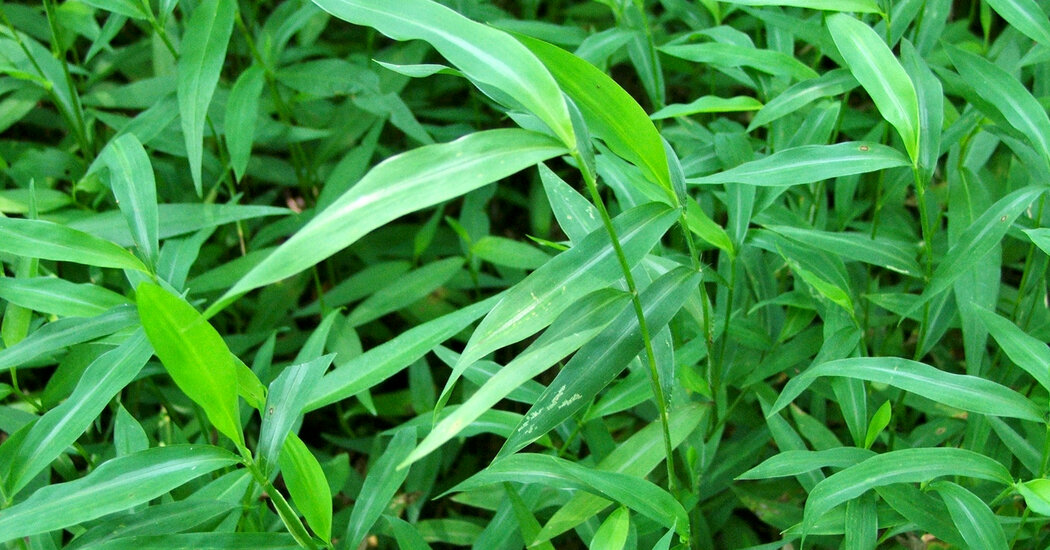
“And we are getting good native recruitment in those areas,” she said. Plants that had been crowded out are returning, including some ferns, grasses and goldenrods, and more seedlings of maples, oaks and hemlock.
For gardeners, she recommends starting by hand-pulling the weed before it flowers and sets seed (in late July or early August, in regions similar to hers), with diligent repetitions. Fortunately, one weedy feature that stiltgrass doesn’t have is 20-foot-deep fleshy roots; its root system is shallow and easy to dislodge.
Unless your stiltgrass invasion is minor and can be managed by hand, Ms. Sirois-Pitel recommends consulting a habitat-management professional — especially before considering any form of chemical control.
“Don’t assume you can go to the hardware store, buy something and use it and get results,” she said. Get advice, even if you don’t plan to hire someone to perform any work.
A pesticide-licensed expert with an ecology background will consider the other plants involved and other factors on the ground, recommending the most effective, conservative strategy. Some grass-specific herbicides, for example, could target stiltgrass and leave broad-leaved species and regenerating trees intact, although they typically can’t be used near wetlands.
So what does stiltgrass have in mind going forward?
Dr. Flory has noticed that populations establishing themselves farther north, in locations like upstate New York, have evolved quickly to a shorter growing season, completing their life cycle by setting seed much faster than populations in Southern states like South Carolina.
“It’s biologically super-interesting, I think,” he said.
He paused before sharing what that observation has him wondering about: “It suggests that the potential range of invasion is much larger than what it is now.”






